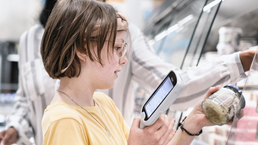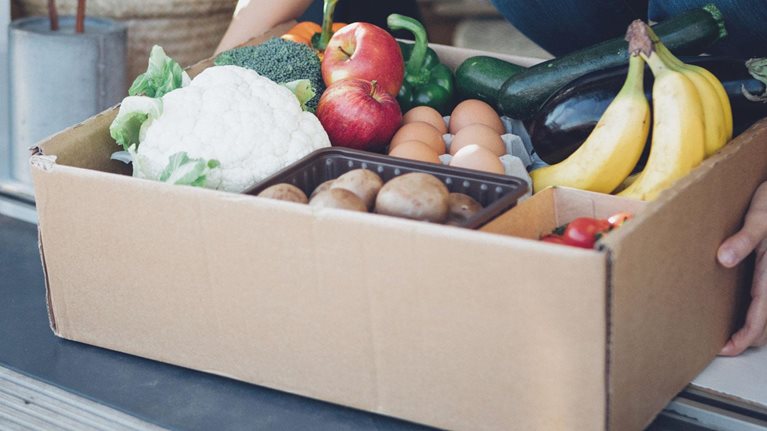While stores remain the key channel for most grocers, online grew dramatically during the pandemic, with many retailers quickly adjusting their offerings and operations to meet consumer demand. The coming years will present new opportunities. Fueled by evolving customer expectations, increased competition, and technological advancements, online could account for up to 18 to 30 percent of the food-at-home market in some leading European countries.
Online propositions will differentiate and likely mirror today’s offline formats—for example, convenience-store visits or top-ups will be covered by instant delivery services, and discount purchases by no-frills offerings. Online shopping will also likely consolidate based on scale efficiencies and winning consumer offers. With online pure players disrupting markets, traditional grocery retailers should now determine which value propositions to focus on, define a scalable operating model, and consider partnerships to complement their historic strengths.
Tracking the trajectory of online grocery
One of the major effects of the COVID-19 pandemic has been a boost to online grocery. Consumers migrated rapidly to online channels, whose greater convenience altered consumer behaviors and expectations over time. The shift also reordered the competitive landscape as new players flooded the market, often backed by large investors.
A McKinsey survey of European consumers reveals most respondents plan to use online grocery services almost equally often as in 2021 (a net intent of –1 percent).1 The results vary significantly by country, however; customers plan to shop more online in advanced online markets such as the United Kingdom (a net intent of +5 percent), the Netherlands (+4 percent), and France (+2 percent). In these countries, online’s share of the grocery market stood at 8 to 12 percent in 2021,2 and its broader offerings have helped to increase customer satisfaction and adoption.
Our analysis segmented selected European countries into leading countries (the United Kingdom, France, the Netherlands, and Sweden) and those still catching up (Germany, Italy, Spain, and Poland). In leading countries, online grocery could make up 18 to 30 percent of the food-at-home market3 by 2030 in our aggressive scenario (exhibit). Scheduled delivery (with the promise of same-day service) will still account for the majority of this share, while instant delivery (defined as delivery on demand, typically with a 15- to 30-minute lead time) could reach 3 to 7 percent of the total food-at-home market in leading countries.4

Sources of future growth
What are the sources of growth that will determine whether online tracks more closely with the conservative or aggressive scenarios in a given country? We expect that online grocery will continue to extend its reach through 2030, with several factors poised to influence demand.
Evolving customer behavior
Online has extended its reach to new customer segments. Before the pandemic, online grocery had a more concentrated appeal, such as among young, urban, affluent families seeking the convenience of large-basket delivery to their home. Now, offerings have expanded to address more shopping missions (such as top-up shopping) and customer segments (such as younger and elder generations).
Click-and-collect models began to see rising demand during the early phases of the COVID-19 pandemic, when delivery slots were limited and customer demand was high. These models also helped grocers reach customer groups beyond urban centers in suburban areas, small cities, and even rural areas. Overall, countries that have been slower to adopt online offerings will see increasing penetration, thanks to the ability of disruptive players to change customers’ expectations and behaviors across propositions.

Would you like to learn more about our Retail Practice?
Increased competition and investment
The online market is still in the process of taking shape. Currently, a multitude of propositions are partly overlapping, but the market’s future state will likely mirror existing offline propositions and replace or improve on them:
- Full-basket offerings are akin to supermarkets. For example, players such as Ocado, Rohlik, and Tesco typically have a very large assortment, same-day service (delivery usually within a few hours), precise delivery windows, and competitive pricing on core basket-building items. Extensions to the current offering include farm-to-table concepts (such as Crisp and Frischepost) or meal kit options.
- Instant delivery is online’s convenience store and small supermarket. Players such as Flink, Getir, and Gorillas cater to customers who order small baskets from a more concentrated assortment. The competitive battleground is focused on speed and user experience, primarily for immediate and unplanned needs. Instant players are also increasingly adding different categories, including (warm) meals to increase their “share of stomach” and take-out options from the restaurant market or meal delivery providers.
- No-frills offerings are the discounters of online. Companies such as Picnic offer low-minimum-order values and no delivery fees while emphasizing value for money in product pricing, but their customers must often accept trade-offs in assortment depth, delivery options, and additional services.
The growth of the online market has attracted a record level of investment. Venture capital (VC) funds and consumer-packaged-goods (CPG) companies seeking to develop their own direct-to-consumer offering have joined the fray. Players that can secure funding for future growth will likely lead the disruption. However, other factors could shape the market’s development, including new regulations (for example, the current freeze on new dark stores in Amsterdam) that could make online grocery less attractive to investors.
Technology
Technology is in the process of disrupting several parts of the online value chain, from user experience to order preparation to the last mile. With technological advancements, business models and operations that are unprofitable today could become more sustainable in the future. For example, advanced personalization could further increase order size for large-basket delivery, and automation has the potential to transform the cost model for order preparation and last mile.
In the longer term, technological advancements could make online grocery less costly to operate than physical grocery—enabling grocers to offer lower prices online than in stores. If that were to happen, physical retail would lose a significant part of its advantage, and we could see new consumer segments—such as value seekers—shifting online and creating a boom for the online grocery market.
Implications for traditional retailers and their physical network
Incumbent retailers that are not currently playing in online might be at risk of losing market share, especially in urban areas. For example, in the aggressive market forecast for the United Kingdom, online scheduled grocery would be the largest channel in the country by 2030, overtaking supermarkets. Executives should consider several actions.

Navigating the headwinds: The State of Grocery Retail 2022: Europe
View online as a future driver of growth
Grocers should define strategies that determine where they want to play and choose enabling investments in areas such as fulfillment, last mile, technology, and talent. This includes devising the most suitable approach, which could combine new capabilities and ways of working (for example, data-driven decision making and agile product development) with historic strengths (such as sourcing or a dense store network). When determining a new strategy, grocers’ decisions could include whether to build their own end-to-end offerings or partner with third parties to address specific parts of the value chain.
Assess the impact of online on physical stores
Online growth will have significant implications for stores, so offline incumbents with existing store networks also need to rethink their omnichannel strategies. While offline might remain a grocer’s largest channel, the role of the store will need to change beyond adding a click-and-collect offering—for example, by creating a distinctive experience that brings customers to physical locations. Overall, grocery stores might need less physical space and might need to reduce costs as offline formats lose sales volumes. The store network can also be a source of differentiation against pure players as incumbents manage their omnichannel offerings.
Chart a path to profitability
Profitability has traditionally proved elusive in online, but some companies have cracked the code. Big-basket delivery players such as nemlig.com, Ocado, Rohlik, and Tesco have achieved break-even or marginal profitability in selected geographic areas. Scale and excellence in all business areas are prerequisites, so players must be prepared to undertake targeted transformations to turn around unprofitable businesses. While online pure players have advantages—they are more flexible, agile, and not bound to parity with the offline offering—incumbent players can benefit from scale and existing brand and infrastructure, among other attributes.
Achieving profitability in the online business while continuing to grow will require management to focus on the following set of levers5:
- Retention efforts. Build personal relationships with the customer by reestablishing a social connection and achieving daily engagement.
- Optimized category management. Create assortment choices that allow for sourcing optimization and decoupled pricing and promotions from the offline business for omnichannel players, allowing more frequent changes and optimization.
- Enhanced user experience during shopping. For example, use personalization to increase convenience and support cross-selling and upselling to build the basket.
- Media monetization. Generate a new income stream in an advanced ecosystem play.
- Automation of order preparation. Reduce costs and increase order quality through microfulfillment and other solutions.
- New last-mile models. Use models such as autonomous vehicles and technology-enabled logistics optimization to lower costs while offering excellent service levels.
- An agile operating model. Allow for fast product development and constant testing of improvements in the customer proposition and user experience.
- Partnerships. Create partnerships in many business areas, from assortment and range extension to automation and last mile, to manage costs and capabilities. Access to customer data and exclusivity will largely determine the attractiveness of a partnership for different players.
Despite the rapid growth of online grocery and the sector’s increased number of players, European markets are still in the early stages of development. Retailers that take decisive action and make strategic investments today will be well positioned to carve out a winning and sustainable market position in the future.

